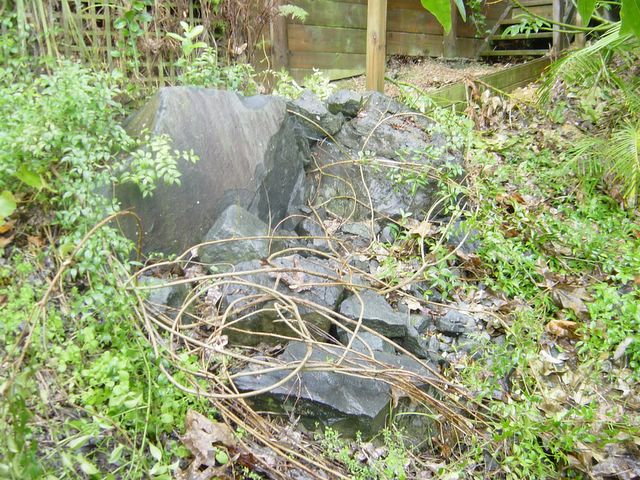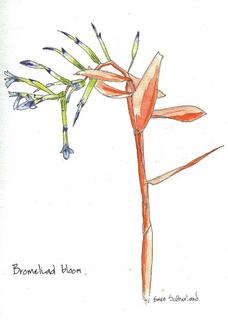AUTUMN PROJECT

Now that the rain has finally come, I can turn my mind to other things in the garden apart from fretting about water! Ironically the project I have in mind is a water and bog garden. Last year we had part of our deck water proofed underneath, in order to create a work space there. The water gathered, being no good for drinking, is collected in a small tank. It is with this water I intend to irrigate my bog garden. Across a narrow path from the tank are a pile of large blue stone rocks, placed there I am sure with much difficulty by the previous owner. These large
boulders surround a shallow dish shape and it is within this area I intend to establish my small pool and bog garden.
The plan is to put a tap in the bottom of the tank and let the water only just trickle out and into the newly formed wet area. This will then over flow down into the rest of the garden where my bananas and other wet subtropicals grow. The construction of this area will necessitate some amount of digging to create a basin in which to collect the trickling water. This basin will then be lined with the thickest polythene I can purchase and the water level determined by using a spirit level. The down hill side may well require a small parapet over which the water, if there is excess, will spill out into the rest of the garden. Most of the wet area will have a mixture of gravel and soil in which to grow those marginal or bog plants, leaving only the very centre with exposed water. This is the grand plan anyway, watch this space!
In flower at present is a plant I first encountered in the gardens at the Auckland University, Ruellia macrantha a native to Brazil. Unfortunately I do not have a common name for this plant. The flowers are pink and trumpet shaped. I was surprised to see it get through this hot dry summer with little water, as it thrives best with plenty of moisture, so I am well pleased with it. In the situation it is growing now it only stands about 60cm tall, however given better soil and moisture it may well grow even taller. Another requirement is good drainage and of course on our steep site this is no problem. The blooms appear winter through and including spring, after which a light prune will keep it tidy. The one thing this plant doesn’t have is a scent, never mind the 5cm x 3cm flowers make up for this.


